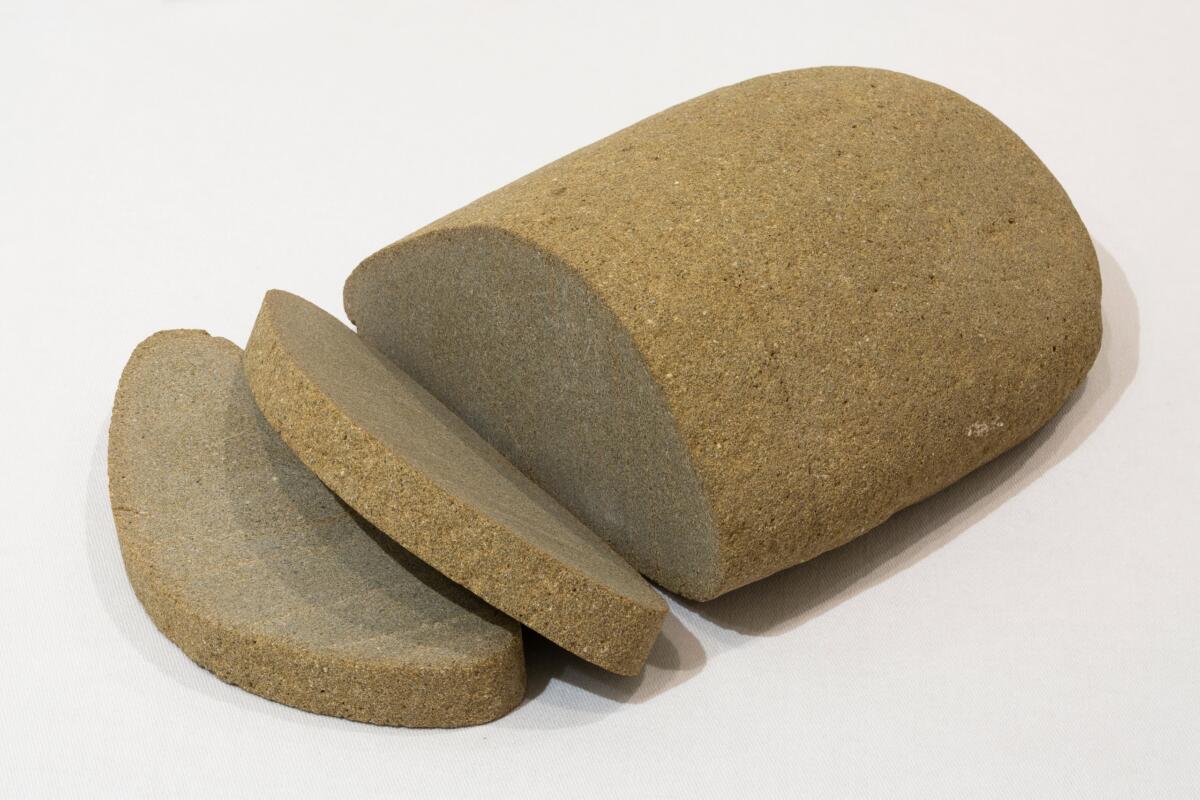
There is a way to talk about the experience of war by reflecting on the most ordinary fragments of daily life. Things as mundane and yet profoundly touching as a sensuously round loaf of bread that fits perfectly in your hands; a piece of wood found on a walk, or a lonely teapot discarded in the attic. All of these insignificant objects, anchored in the affective matrix of memories, have the capacity to serve as measuring tools for the chaos of war-stricken land. Stolen Sun, an exhibition organized by Lika Wolk, on view at Miguel Abreu Gallery through October 23, stages a quiet, wistful encounter with the shards of the shattered reality of war-torn Ukraine during the Russian invasion. The show traces how the eruption of violence and militarism has disrupted and reconfigured the various dimensions that make up life in peacetime: the affective and perceptual fields and the fabric of social relations, among others.

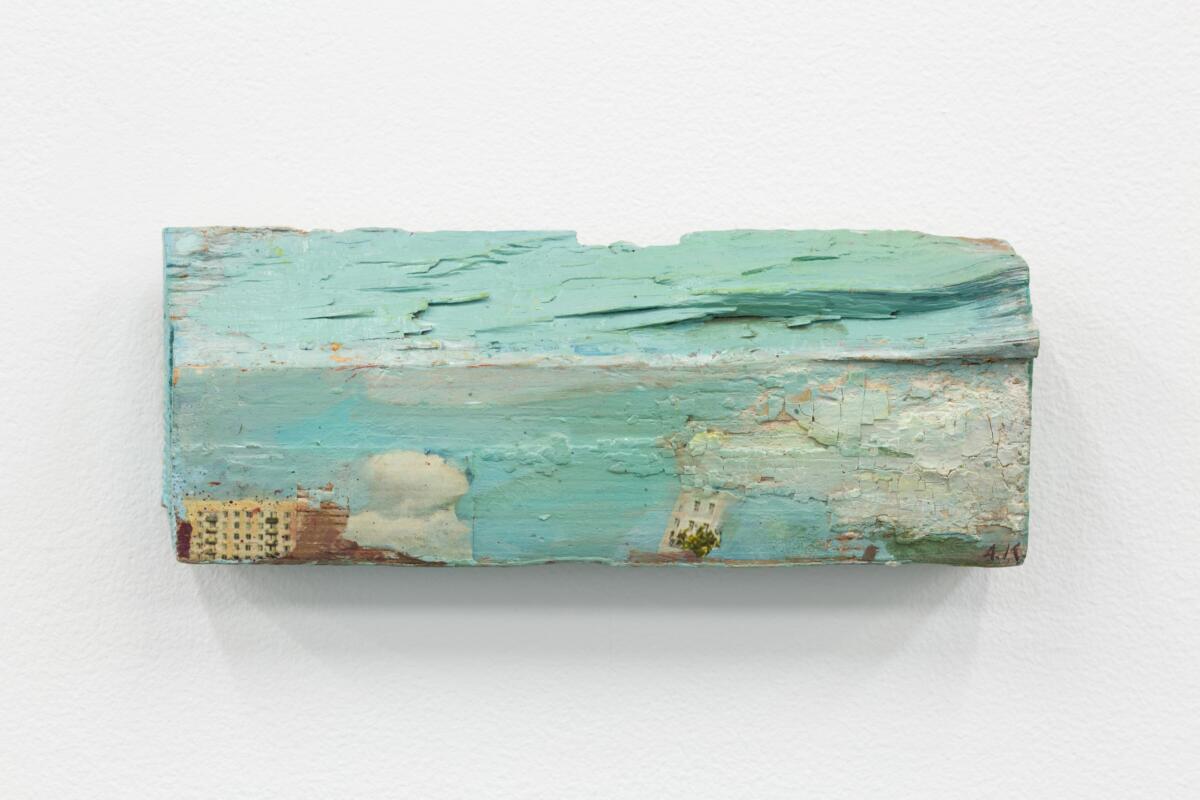
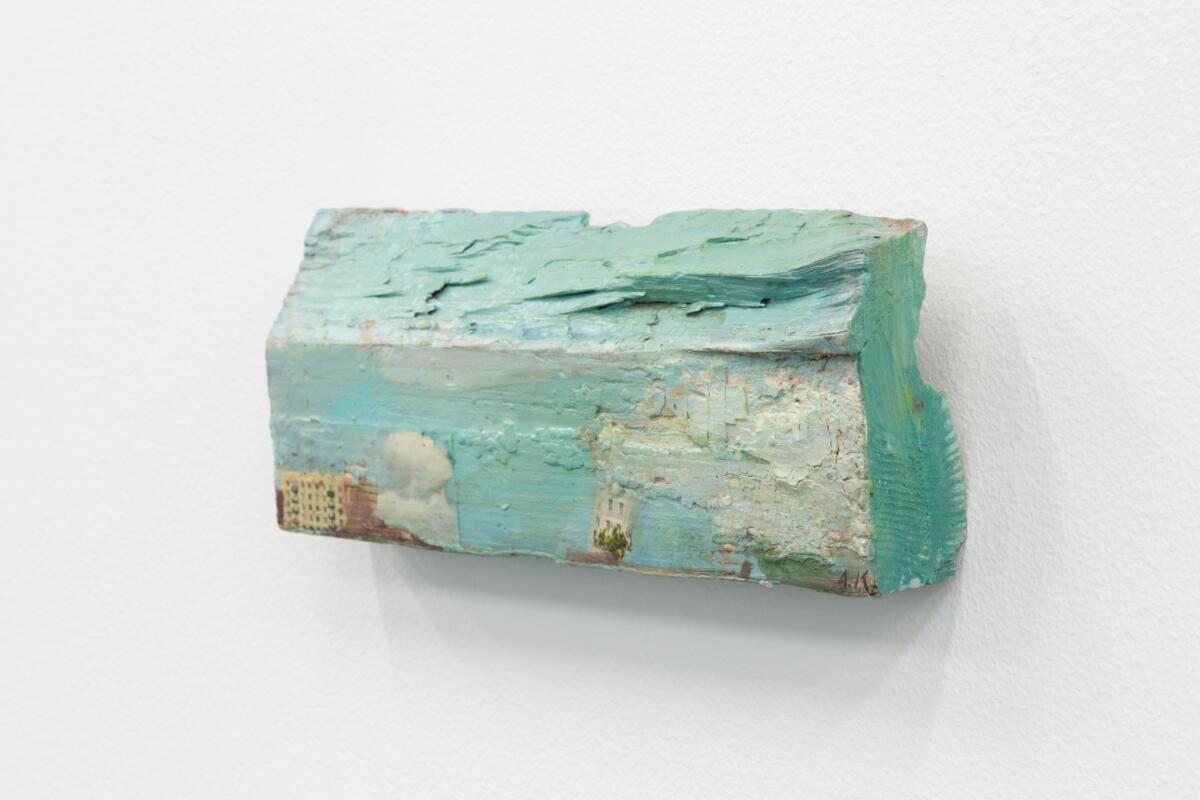

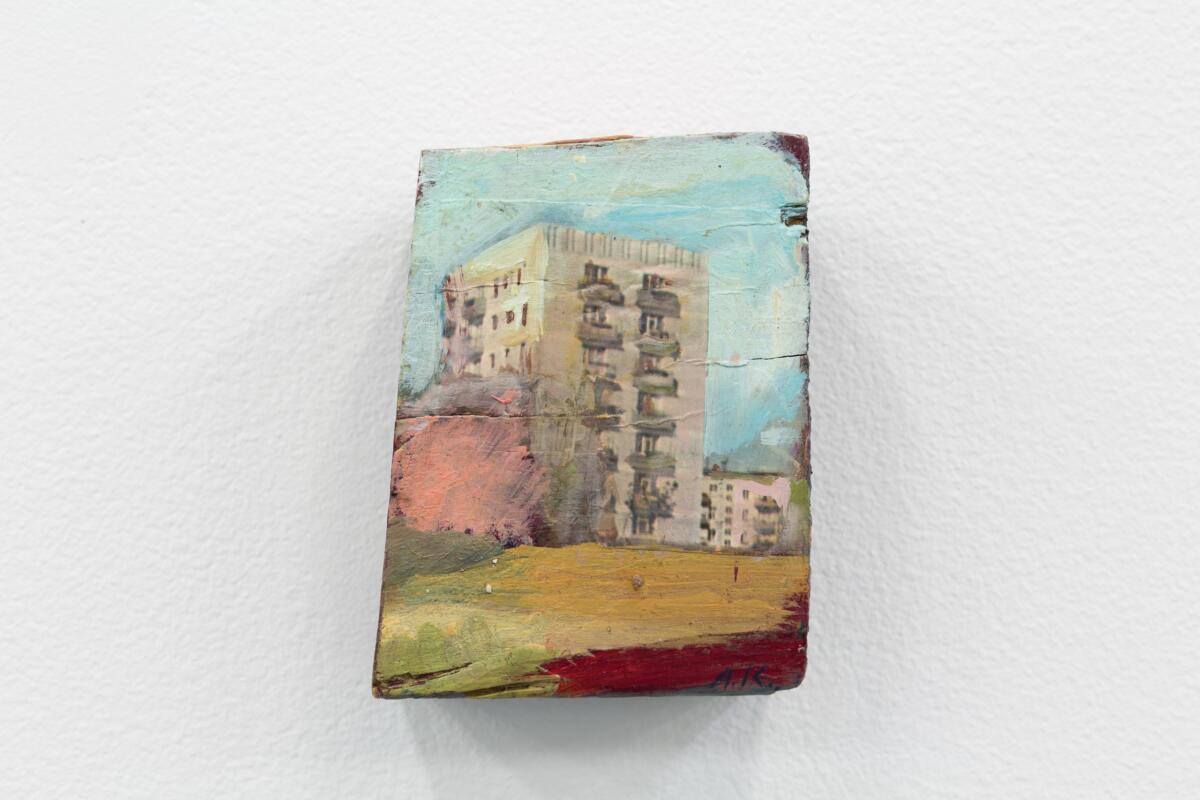

The show gathers tchotchkes and everyday objects as represented in collages and sculptures. By invoking objects of everyday use, the works invite us to look at them as though they were a prism refracting the erosion of secure relationships with the land, objects, architecture, and other people. Zhanna Kadyrova’s series of river stone sculptures succinctly elucidate this double breakdown of sociality. Placed on a table covered with a white cloth, a group of these stone pieces greets the visitor immediately upon entering. Entitled Palianytsia, the sculptures, both visually and through the title, evoke the staple Ukrainian wheat bread. The artist collected rounded, river-polished stones and cut them into thin slices, laying bare the subtle color markings within the stone’s insides. “Palianytsia” is a Ukrainian word signifying the type of round wheat bread, a pronunciation of which includes phonetic clusters foreign to native Russian speakers. Because of that phonetic particularity, the word has been used as a simple litmus test of one’s military allegiance. Uncannily similar to loaves of bread, Kadyrova’s humble sculptures embody the petrification of safety and the discontinuity of the domestic sphere amidst the open, armed conflict. By referencing the staple wheat product as a heavy, cold stone, the artist creates a deadening atmosphere of hostility and unease whereby the objects of ordinary sustenance can become weaponized, turned into a military resource or intelligence strategy, imprinting difference and division onto both people and objects.
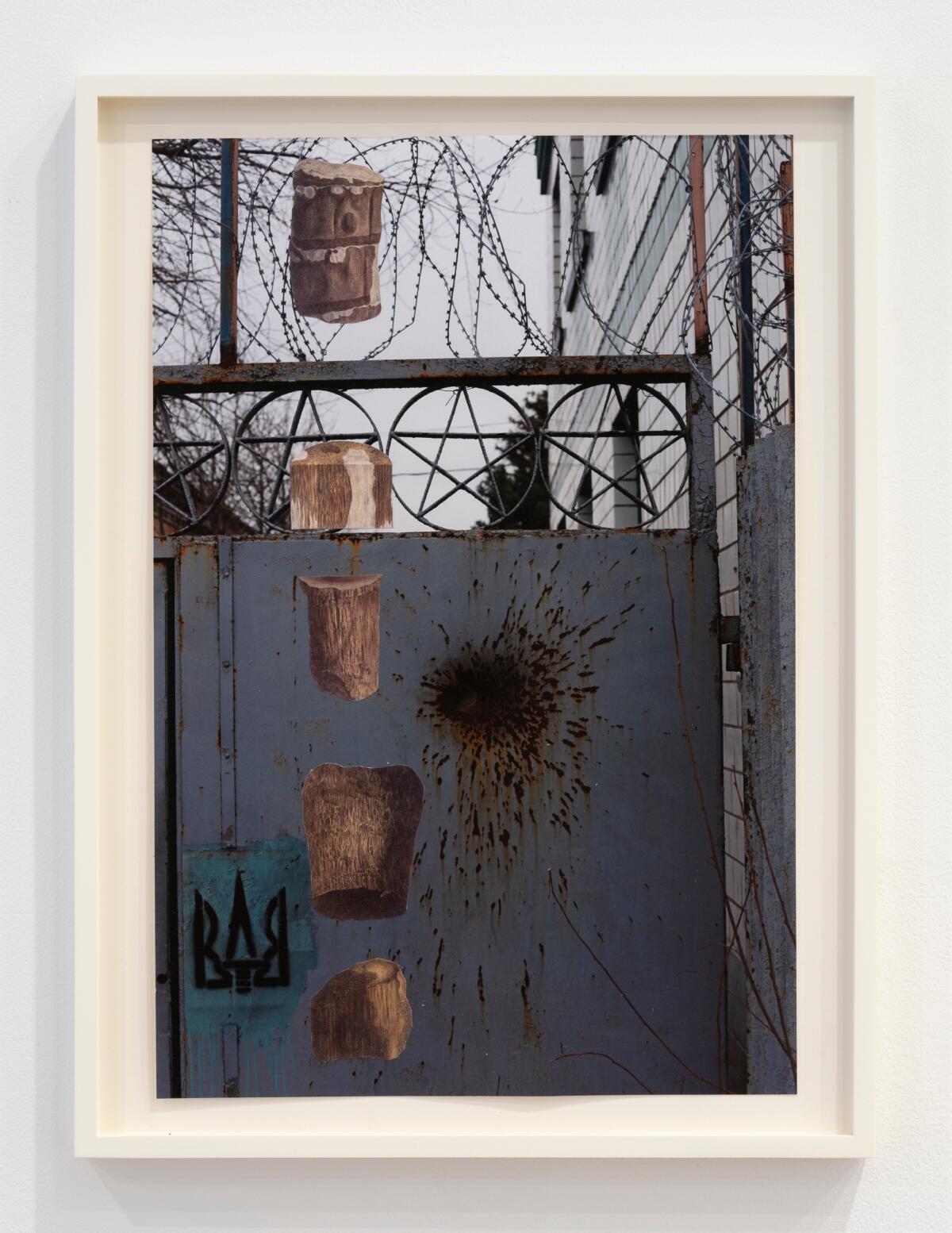

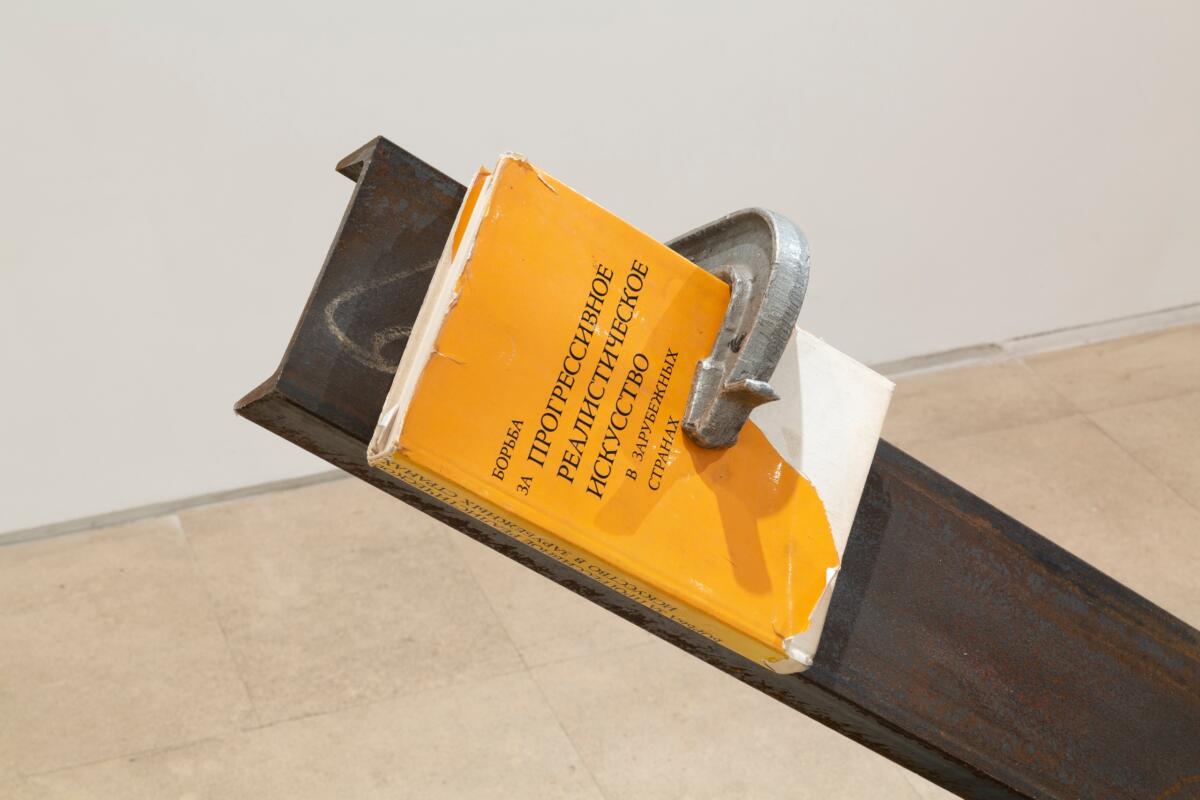
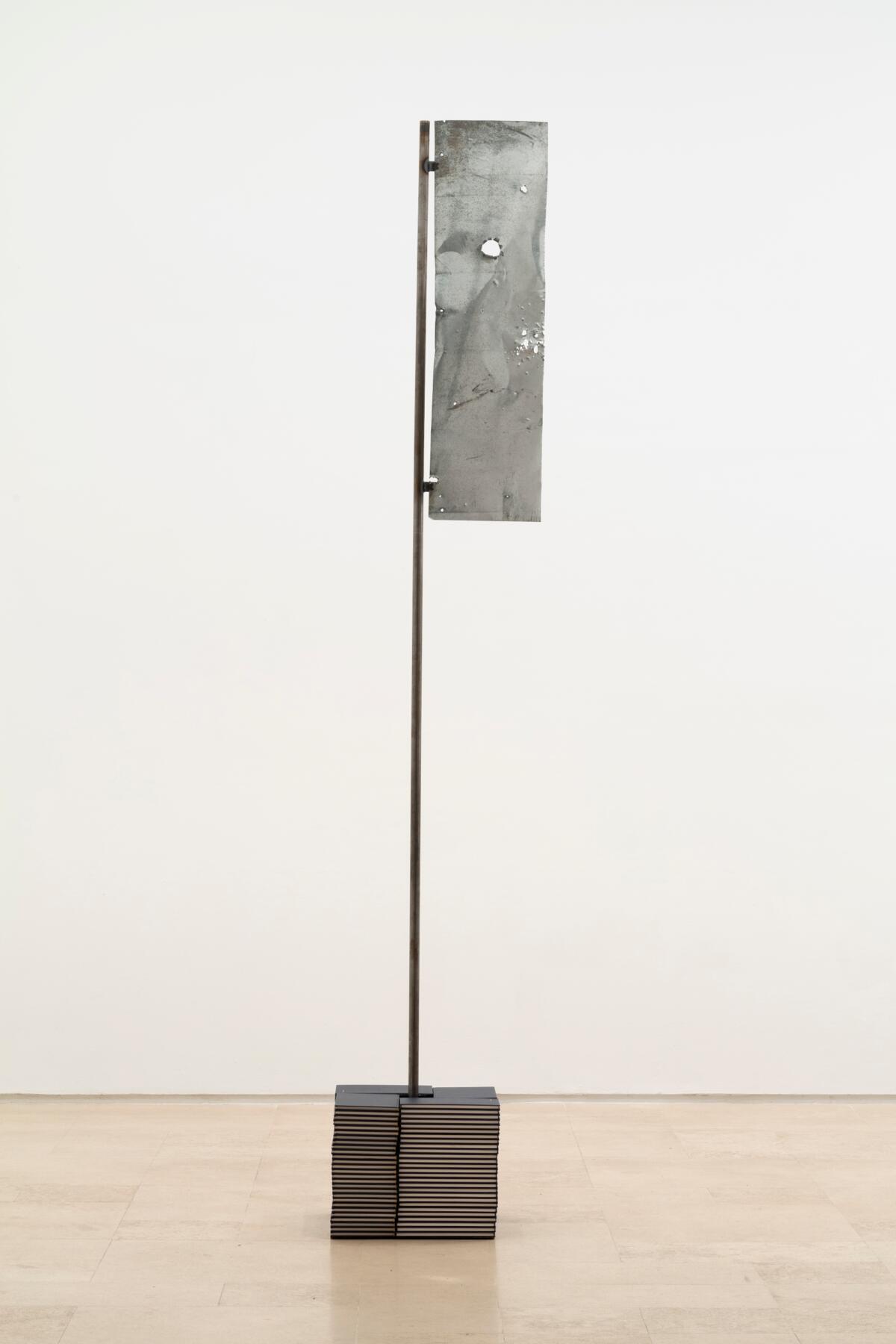

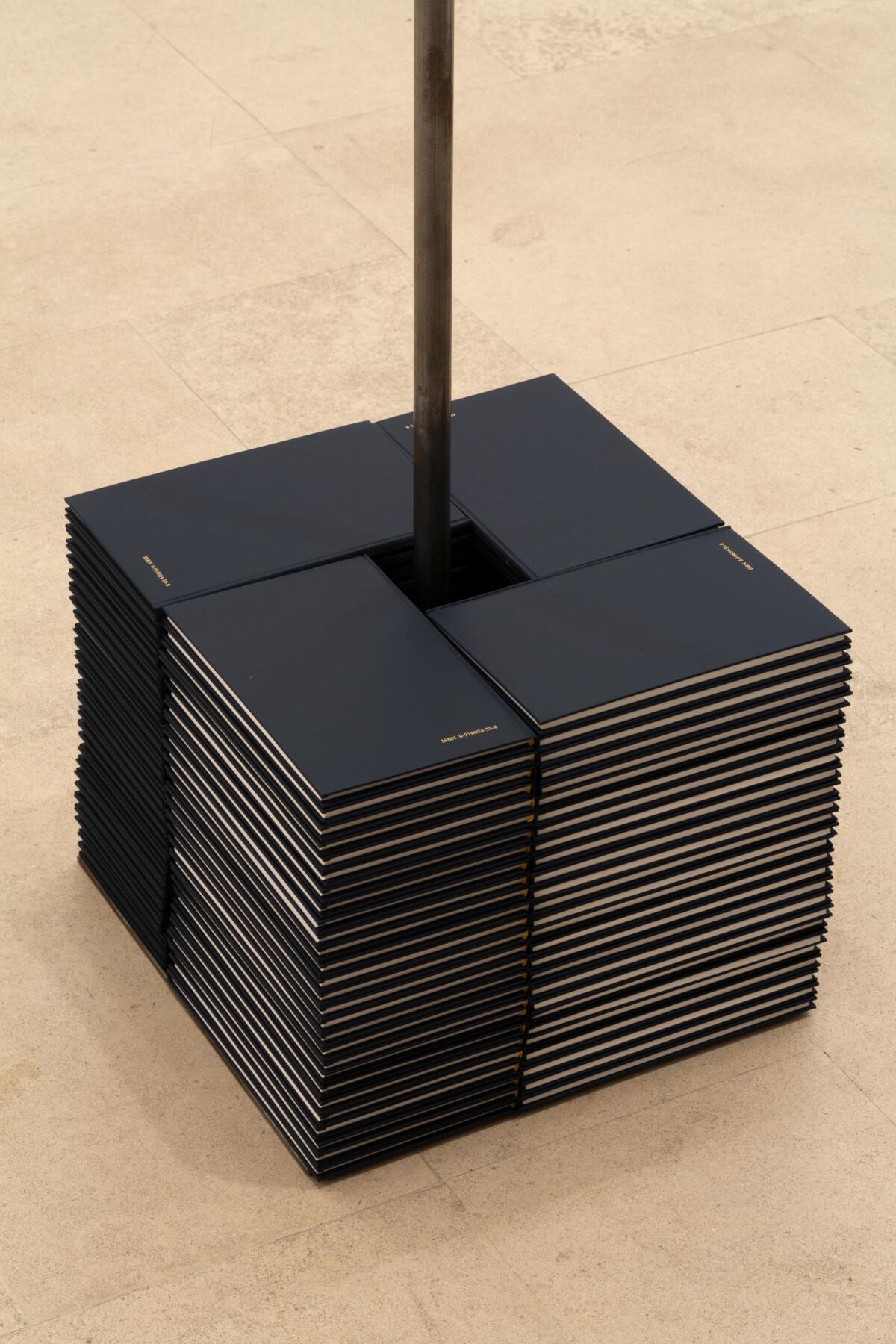
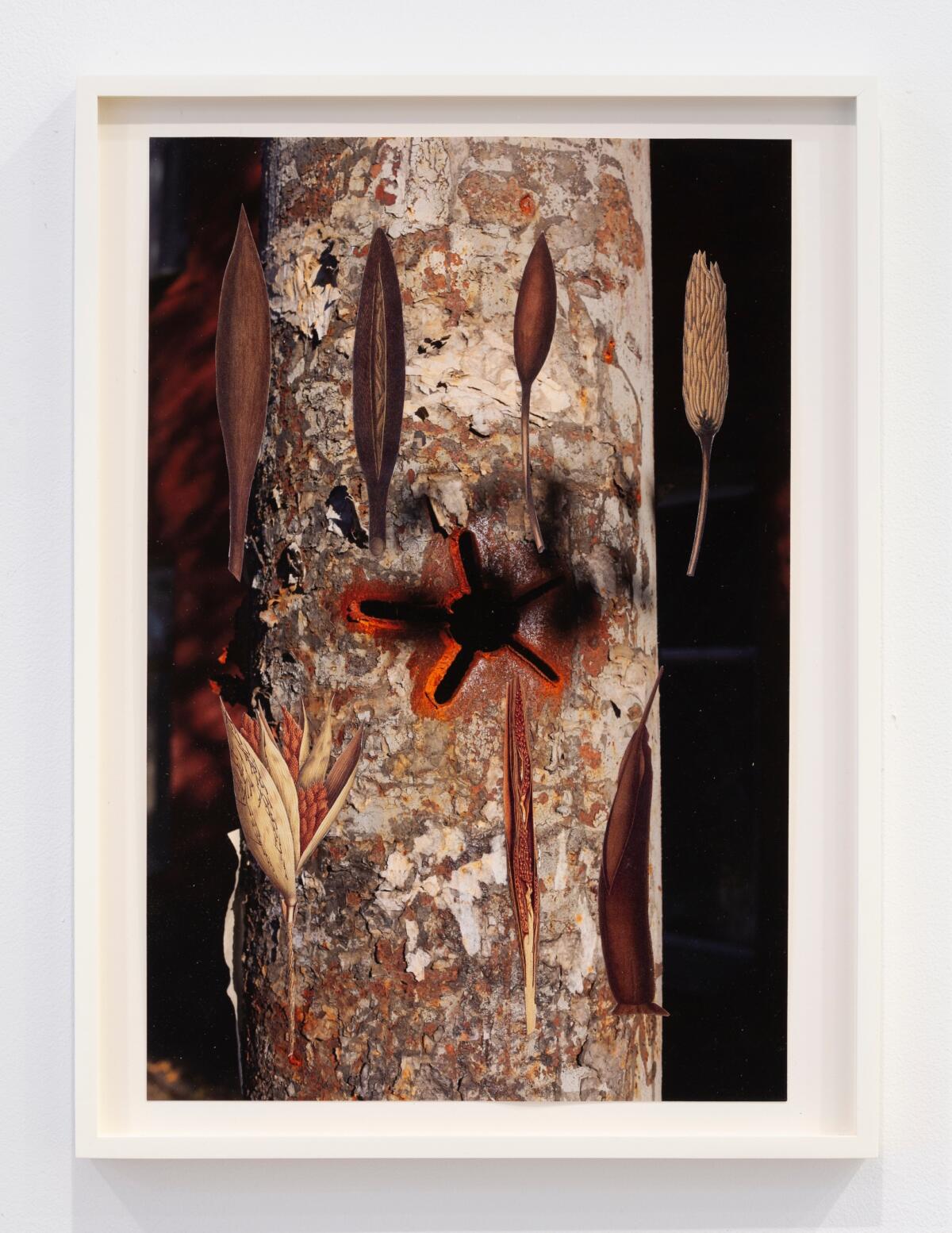
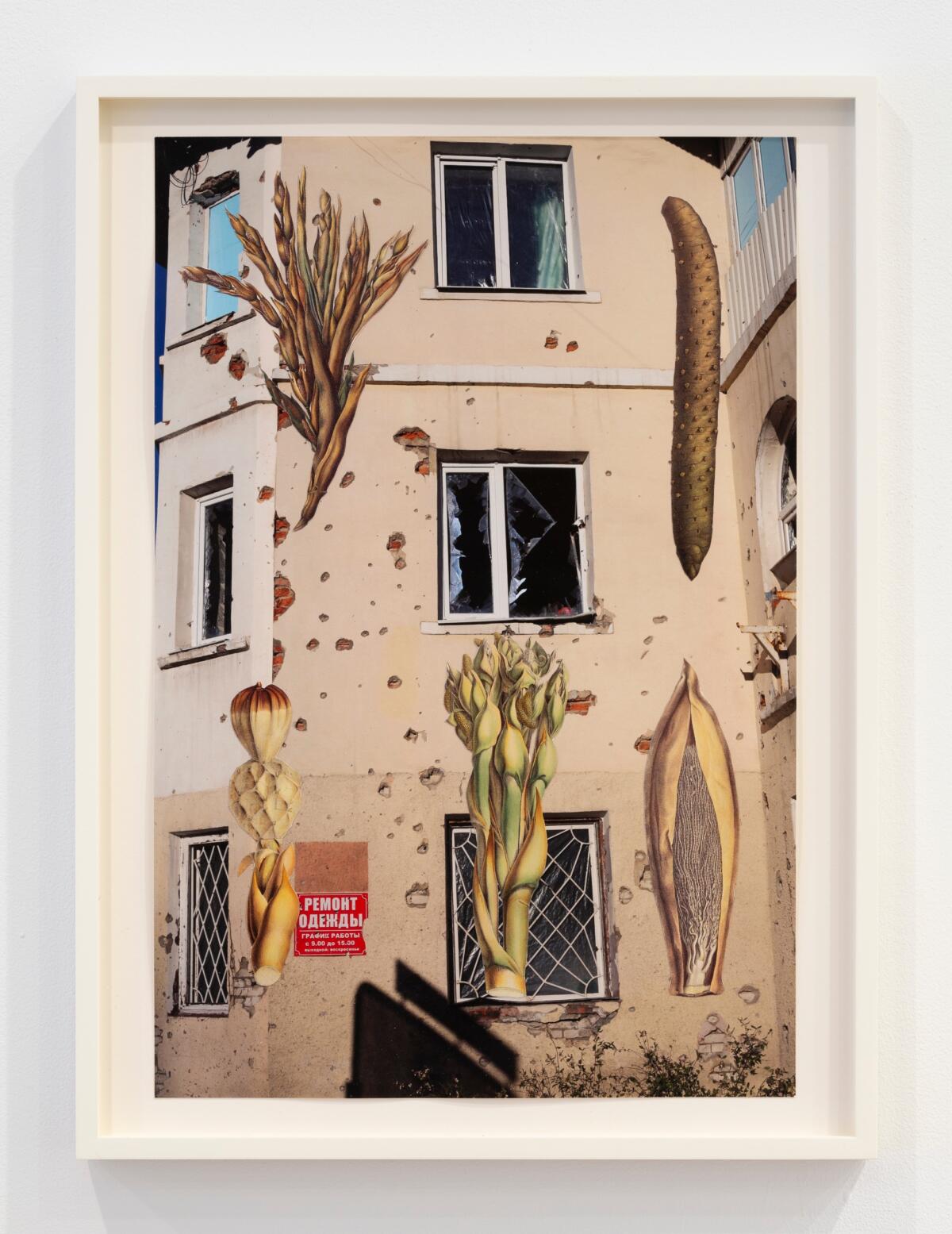
Through representation, metonymy, documentation, and conceptual juxtaposition, the works in the exhibition index deep wounds in the sense of the organized, predictable, and liveable reality. The virulent distortions of everyday experiences make the world appear unreal, out of joint, as the previous systems of reference become dysfunctional. Responding to this dissolution of civilian logic, Nikita Kadan’s newest series of collages illustrate the screeching dissonance produced when a rational system is placed upon reality raked by war. In Protection of Plants (2014–2022), the artist brings together the genres of documentary and landscape, as he overlays photographs of urban environments mutilated by shelling with cutout textbook images of vegetation, collapsing the decorative pattern of leaves, fruits, and buds into the chaotic arrangements of bullet holes. Disassociation, a state of divorcing oneself mentally from the unmanageable, unbearable present, is often accompanied by visual distortions. Kadan’s mixed technique collages tap into that uncanny sensorial experience while suggesting a new approach to landscape, one that befits the destruction zones that flourish in the wake of battlefields – a landscape of ruins and resilience, haunted by ghosts of a past (perhaps completely fictitious) order.
Kadan is also the author of two large sculptures that dominate the center of the gallery space with their commanding presence. This sense of authority is entirely a product of the economy of fear embedded in weaponry and military equipment, and the immediate, destructive results of their operation. In Struggle for Progressive Realism in Art in Foreign Countries (2022), Kadan combines a heavy anti-tank hedgehog with a Soviet-era book on Western Art: these two incarnations of ideology forcefully connected by a steel clamp seem to forewarn the viewer of the consequences of Russian imperialism. Irpin (2022), another sculptural work by Kadan, stands slightly farther to the left, consisting of a piece of shrapnel-damaged iron roofing strung onto a flagpole, secured at the bottom by a stack of books. The iron sheet was once part of a secondary school in Irpin, a town near Kyiv, that has been destroyed by aerial bombing. These two works bring the painfully physical threat that has befallen the Ukrainian people into the gallery; the works materialize the presence and traces that signal that reality has been thrown into utter disarray. It’s spine-chilling to look at them, although one cannot avoid asking if the white cube is an appropriate place for the display of this type of destruction.


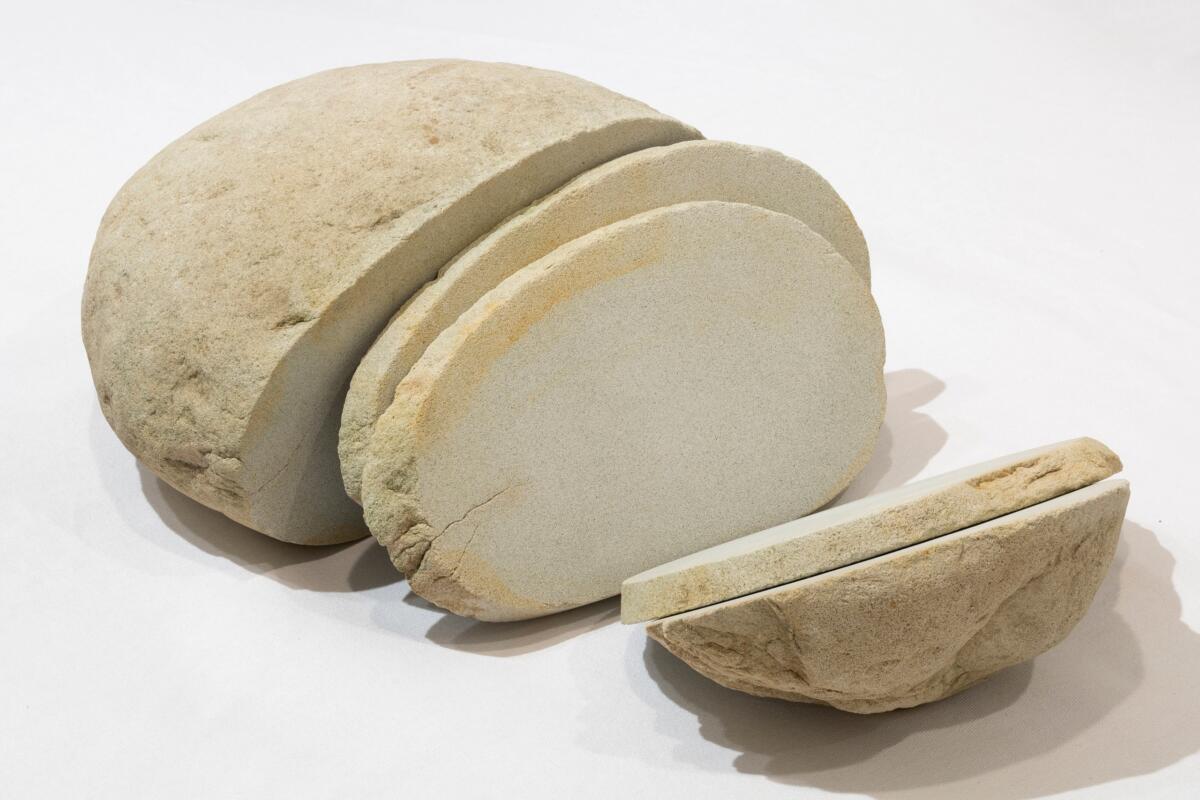

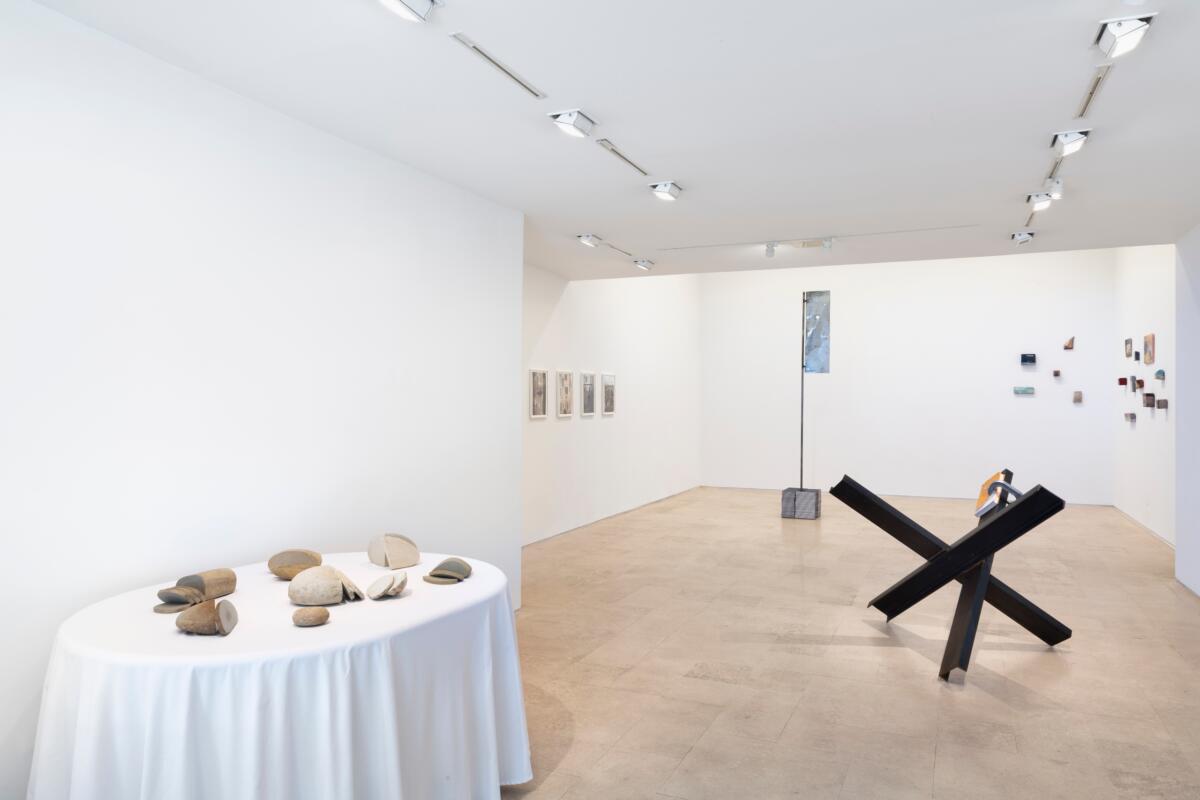

The displacement brought upon by the escalation of the Russian war in Ukraine is maybe most poignantly described by the beautiful constellation of small painting-collages on wood by Alexandra Kadzevich, which are nestled in the right-hand corner of the gallery. These unobtrusive pieces of wood, no larger than the palm of a hand, were carefully hand painted by the artist and embellished with small fragments of printed matter. Some works portray opaque, yet familiar scenes: two figures absorbed in a discussion, people on a beach, a bus on a street, an oblique view of a house. Other paintings zero in on singular objects or words: a samovar (kettle), a fragment of a door or a ceiling, the word “romance”, a single figure falling. The arrangement of the works on the wall suggests that some kind of centrifugal force had strewn these pieces around. Their compressed materiality, in which the image becomes coextensive with the repurposed wood piece makes them into sentimental tokens, carriers of memories. There is an affectionate care in collecting and salvaging these prosaic shards of a life once lived. Kadzevich’s series lyrically embrace the dislocation and reconfiguration of the habits, objects, and people with the change of relations and affective meanings that necessarily ensues post-rupture.
The exhibition continues in the gallery basement; when walking downstairs, one cannot avoid thinking of the descent of a whole population into underground shelters, a trenchant emblem for life-turned-survival. This asymmetrical parallel is only intensified by the red lighting in the room. The video installation Repeat After Me (2022) by Open Group (Yuriy Biley, Pavlo Kovach, Anton Varga) is staged in a way that evokes both a shelter and a club. With two mic stands facing a projection, the work consciously draws on the structure of karaoke. Open Group invited refugees from a refugee camp in Lviv to recall and recreate the sounds of various weapons they had encountered. The ability to distinguish the type of attack can prove crucial in taking necessary evacuation measures. In an eerie version of karaoke, the video participants first imitate the sounds of artillery shelling, rifle gunshots, and other sounds of military attack, and then encourage the audience to repeat the improvised onomatopoeia. By sharing their knowledge of the battlefield soundscapes, the refugees in the video disseminate the changes in the sensorial field that the war has produced and teach how to adapt to this radical change. With the militarization of urban environments, alertness has shifted towards far more nefarious cues, yet the tranquility of the refugee camp pictured in the video suggests that these lessons in danger detection are meant for those relatively inexperienced in survival tactics. The experiential shift from relative safety to warzone to safety again might be impossible to relay, but this provisional oral tradition indicates the valiant efforts made to adapt to this new radically inhospitable environment; to resist violence, and to nurture community despite catastrophe.
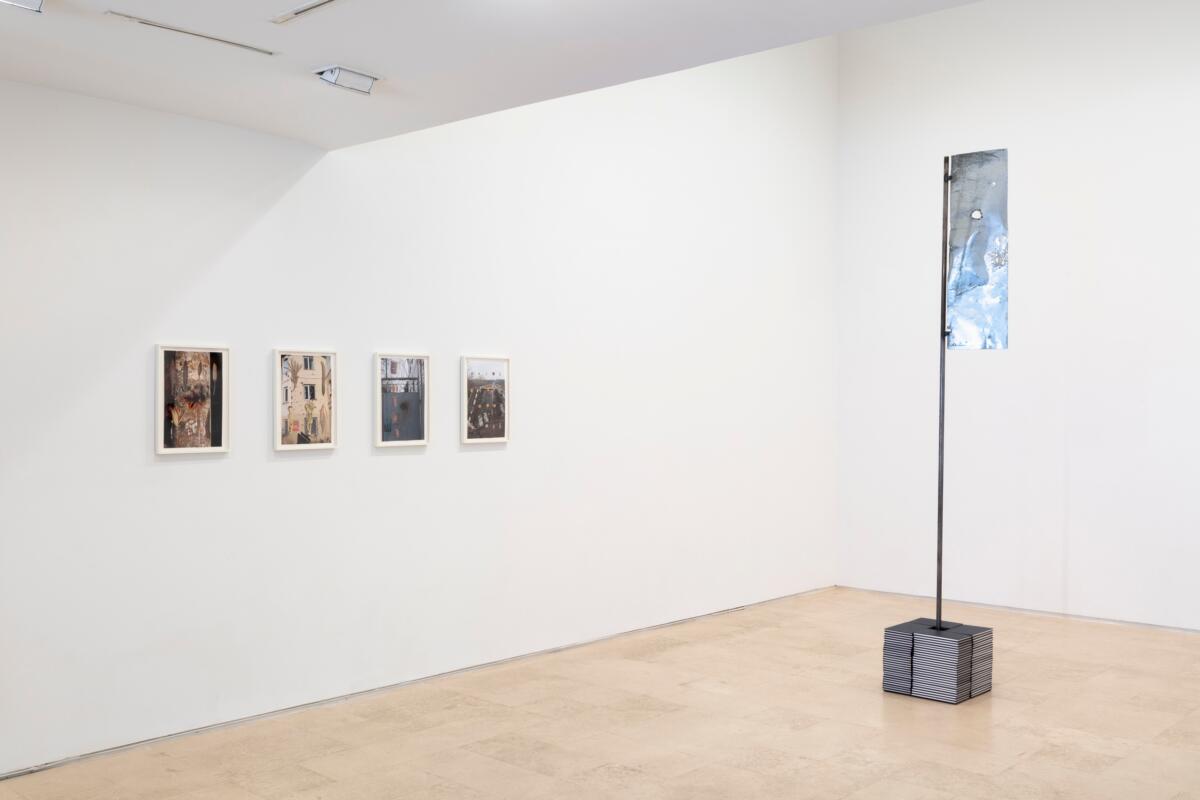



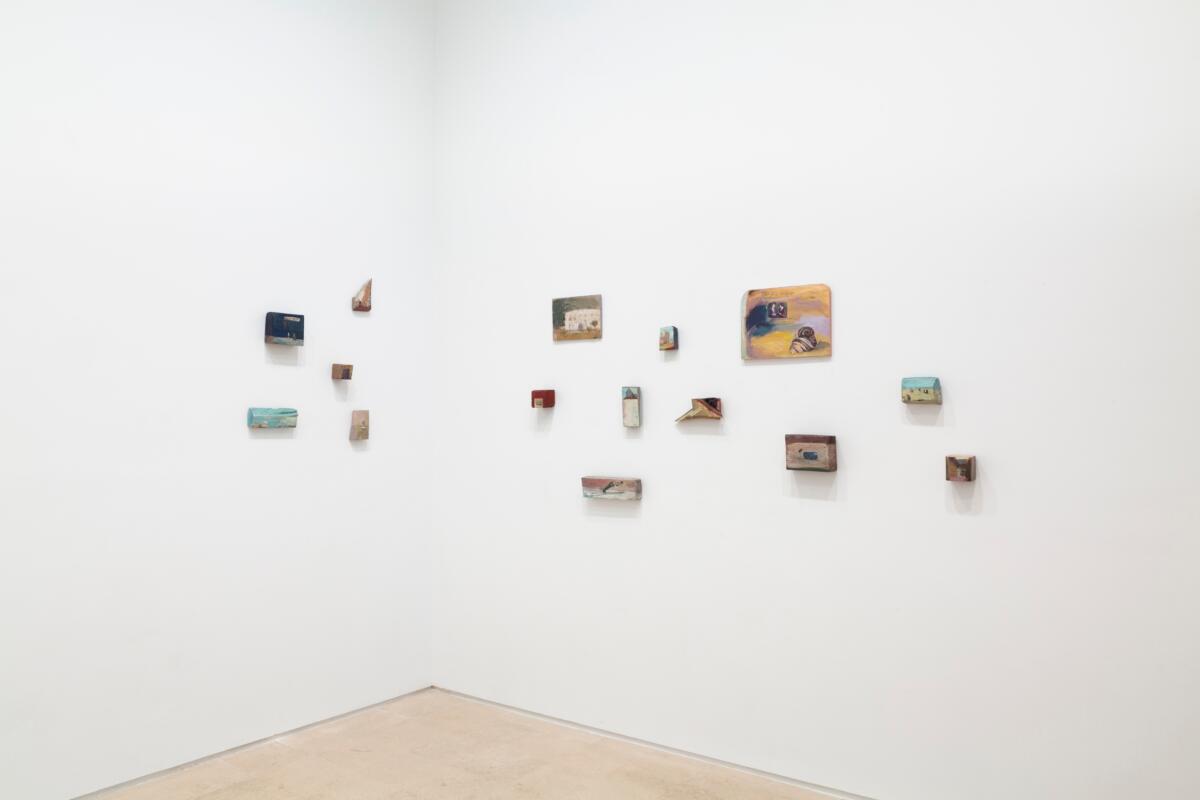
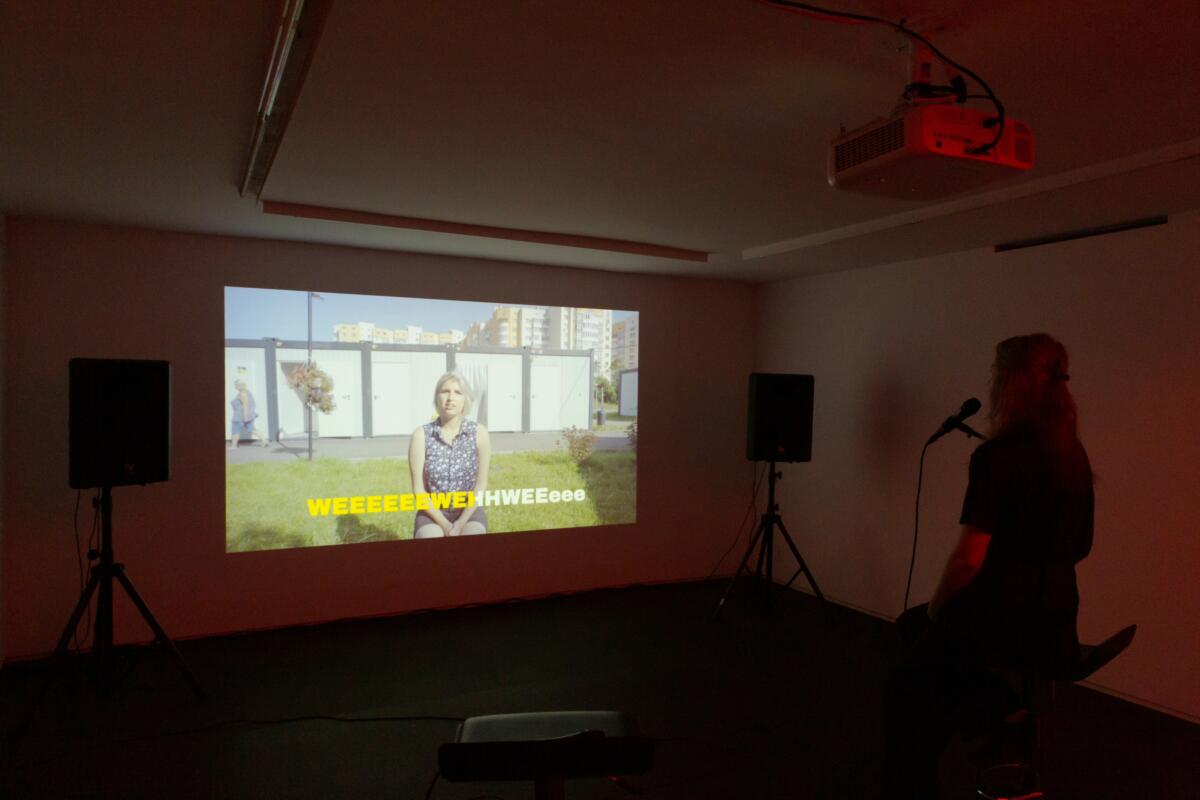

Stolen Sun presents various ruptures experienced by the Ukrainian nation since the start of the full-scale Russian invasion. The unspeakable strangeness of one’s home turned into a battleground is narrated here through exercising tenderness towards ordinary objects, flavors, sights, and habits. These attachments and sentiments persist despite and in defiance of the displacement, wreckage, and the undoing of everyday life. The exhibition does not shy away from literality when it displays a fragment of a bullet-riddled school roof or brings the viewer underground. There is a sense of urgency and gravity in these artworks and their accounts of war that cannot be watered down to the aesthetic dimension only. This tension between telling the truth about the experienced horrors and keeping quiet about it – since words cannot express it – is the distinguishing feature of what Judith Herman calls the dialectics of trauma. As Herman reminds us, silence can also be forced upon the traumatized subject by their perpetrator. Silence then can operate as a double-edged sword: bringing relief, making space for recovery from the too-much-to-bear, but it can also be a political instrument of subjugation. By integrating both solemn silence and the impulse to testify, the emotionally charged works by Nikita Kadan, Zhanna Kadyrova, Alexandra Kadzevich, and Open Group, arranged by Lika Volk, give testimony of the unfolding crisis but most crucially – they defiantly state what is being lost by Russian aggression in mournful silence.
Edited by Ewa Borysiewicz and Katie Zazenski
Imprint
| Artist | Nikita Kadan, Zhanna Kadyrova, Alexandra Kadzevich, Open Group |
| Dates | 15.09— 23.10.2022 |
| Curated by | Lika Volk |
| Index | Alexandra Kadzevich Dominika Tylcz Lika Volk Nikita Kadan Open Group Zhanna Kadyrova |
